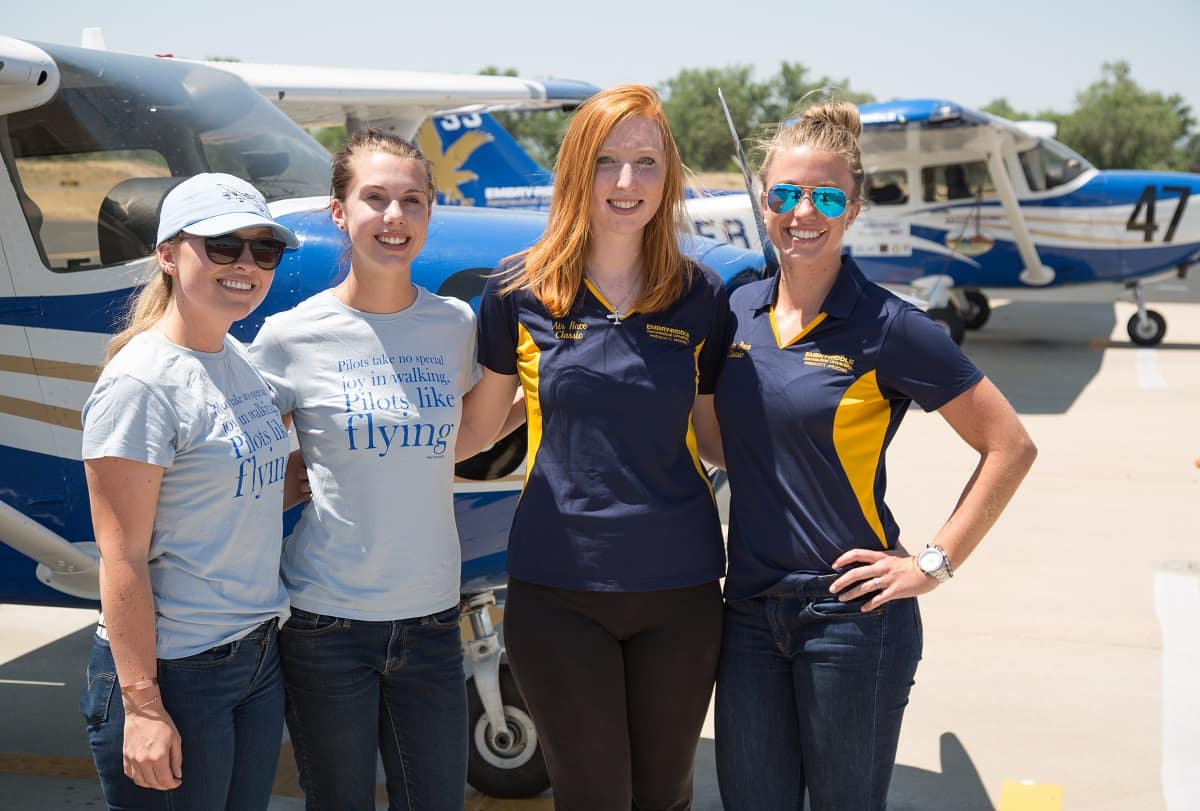Aviation Week Op-Ed: Casting a Wider Net for Pilots

This Aviation Week op-ed underscores the lack of progress made by women in aviation when compared to other male-dominated professions. Embry-Riddle Aeronautical University President P. Barry Butler, Ph.D., writes that drawing more women into the field is paramount “to sustain and grow the economic vitality and innovation of the industry.” This essay — published in October 2019 — is available to read at the Aviation Week website and below.
By P. Barry Butler
Prior to joining Embry-Riddle Aeronautical University, I worked at a large public university. It was common for the university’s professional programs such as law, medicine, pharmacy and dentistry to proudly display a chronological history of their graduating class photographs. For the faculty and alumni, the photos marked a time in history when their paths crossed. To me, they were a stark, visual illustration of how professions that were once exclusively male have, over the past few decades, made tremendous strides toward equal representation.
The same cannot be said when it comes to aviation, despite the reality that this is an industry with unprecedented opportunity and no shortage of available jobs at every level. We need to ask ourselves why things have changed so momentously in other professions and how our industry can benefit from history’s lessons.
Those of us who lead the aviation and aerospace sector of the higher-education community know that it is incumbent upon us to address this issue aggressively. While women are attending college in numbers equal to — and in some places greater than — men, they aren’t lining up nearly as quickly for the disciplines that will bring them to the flight decks, hangars and C suites of our industry. Moreover, we do not just need women. We need all underrepresented groups to fill the huge demand for pilots, mechanics, engineers, aviation business leaders and entrepreneurs.
The first female pharmacy student graduated in 1863. Six years later, in 1869, the first woman was admitted to the law bar. Both events took place while powered flight was still just a dream. Today, women comprise 38% of all lawyers in the U.S., almost 57% of pharmacists and more than 32% of dentists, but only 4.4% of airline pilots are women.
There were many factors that helped women break into those traditionally male fields, but chief among them was access to the education and licensing needed for success, which has improved by quantum leaps since women began to join the workforce in greater numbers following World War II. Nevertheless, it was not until 1973 that pioneers such as Emily Howell Warner and Bonnie Tiburzi Caputo were first hired as pilots at U.S. passenger airlines.
In the five decades since, progress for women has been slow and inconsistent. Shifts in attitudes and opportunities that welcomed women into the workforce during World War II stalled again after the war. The word “professional” remained synonymous with men for decades, but that changed in other industries. It’s time for it to change in our industry, too. We don’t have 50 years to catch up.
At Embry-Riddle, getting young women excited about careers in aviation and STEM has become an integral part of our strategic plan. We remain committed to initiatives aimed at breaking down barriers and opening doors. Most recently, through an alumna donation, we launched a program that pairs outstanding paid student mentors as well as alumnae with incoming female Aeronautical Science students who are training to become pilots. Embry-Riddle is making such investments because our industry cannot thrive or innovate if almost half the population is not at the table.
This is not a solo act. Industry collaborators like Boeing, Southwest Airlines and FedEx are supporting Embry-Riddle scholarship programs that help us attract and educate women and other underrepresented groups. More scholarships are needed, as are more networking and internship opportunities, especially at the K-12 level. In addition, despite the amazing programs that exist to get more girls into airplanes for a first ride, we have not yet, as a sector, figured out how to keep them in our pipeline when those aircraft land.
We are not alone in recognizing and reacting to this problem. In the U.S., the Women in Aviation International organization sponsors multimillion-dollar scholarships and a yearly conference to support women in all aspects of aviation. Fang Liu, secretary general of the International Civil Aviation Organization, has made gender equality one of her chief priorities. The International Air Transport Association has entered into a partnership with four other groups to launch “Soaring through the Glass Ceiling.” That new program will look at what is holding women back in the industry and make recommendations to boost diversity in all areas of aerospace and aviation.
In Europe, EasyJet has set a goal of having women make up at least 20% of its pilot cadet classes by 2020, while other airlines are setting up similar initiatives. In the UK, universities, corporations and government are signing joint commitments to work together on this issue. An Indian airline, IndiGo, has the highest percentage of female pilots at 14%, despite the Indian Air Force inducting female pilots only in 1993.
From my seat at Embry-Riddle, it appears we have the problem sharply in focus. It is incumbent upon all of us to bring the same focus to finding the solutions. We should be able to leverage some of the factors that helped women overcome obstacles in other professions and apply them to aviation and aerospace.
Equal representation is so much more than a goal. If we are to sustain and grow the economic vitality and innovation of the industry we serve, it is nonnegotiable.
